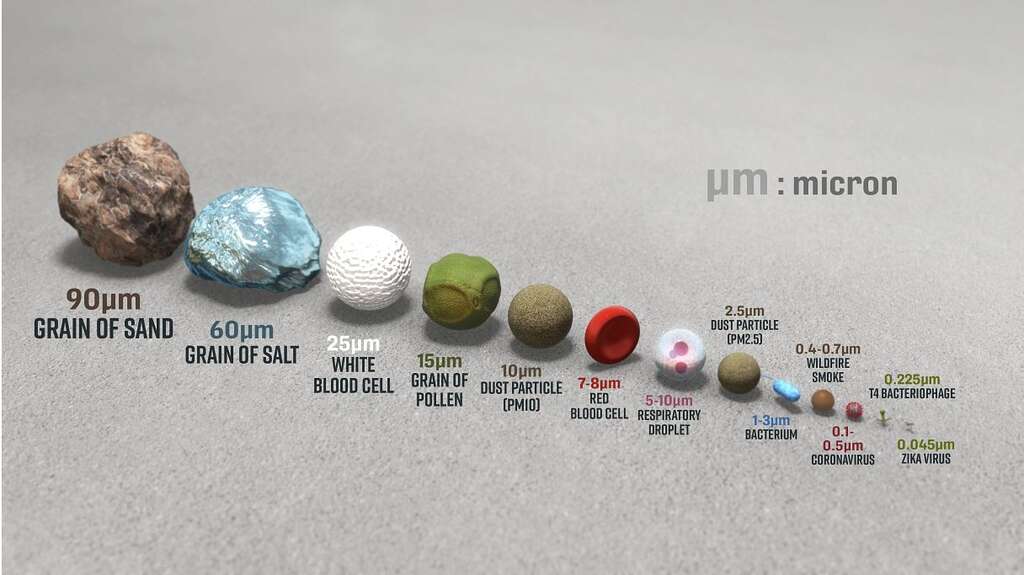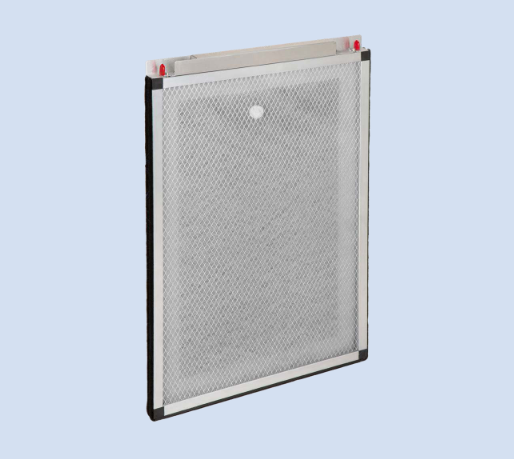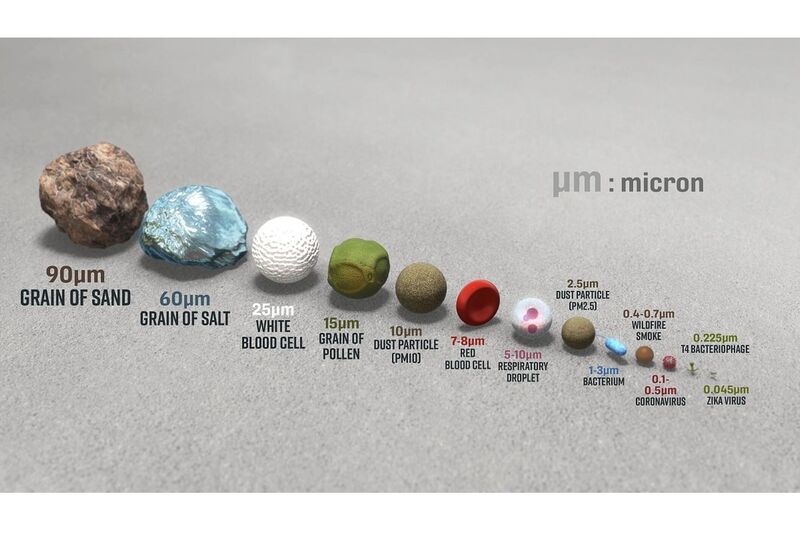Breathe Cleaner Air
Posted: June 19th, 2025

AIRBORNE PARTICLES have two classifications: coarse and fine. Particles larger than 2.5 microns are classified as course particles and those 2.5 microns or less are classified as fine particles. A micron is 1/25,000th of an inch in diameter and our natural defense systems cannot eliminate fine particles. Individuals with health problems, those suffering from allergies, asthma, elderly or young with compromised respiratory systems, should be in clean air environments. Respiratory ailments represent the third largest cause of death in the U.S behind heart disease and cancer (AMA), these medical conditions are often attributed to poor indoor air quality. The EPA indicates indoor air is often 7-10 times poorer than outdoor air quality.
There are three basic approaches to improving indoor air quality:
- Control or eliminate the source of pollutant
- Dilute the contaminant, through ventilation
- Remove the contaminant from the air by filtration
Ventilation is a solid approach, but the source of contaminant may be the outside air, think busy streets. Ventilation may raise the cost of conditioning the air for heating and cooling. When control and ventilation are not practical, filtration is the best solution.
Filtration of sub-micron particles are not always easy. Air filters are not necessarily designed to remove the fine particles from the air stream, but are designed to protect the equipment from the larger particles and not the occupants. Standard filters provided with a house furnace, or commercial heating and air conditioning equipment, are not efficient at the removal of the fine particles.
Removing harmful fine particles from the air requires a filter or filtration device specifically tested for the ability to remove exceedingly small particles. Please note air filtration products that state high efficiencies define this as the capacity for holding dirt according to a percentage of total weight. This does not guarantee you will be able to filter out a corresponding high percentage of the fine particles. For example, an indoor air sampling shows 98.5% of particles with 1 micron or less, the filtration system will need to remove sub-micron particles, those tested and rated for the 2.5-micron range and smaller.

The higher the MERV value of an air filter, the more efficient it is at removing particles. At the lower end of the efficiency spectrum, a fiberglass cardboard frame filter might achieve. MERV 4 or 5. Store bought pleated filters range from MERV 6–12. Higher-end filters, such as those used in hospitals and clean rooms, range from MERV 13–17.
MERV 17 is a true HEPA filter, and MERV 18–20 are ULPA filters and have the highest efficacy. High-MERV filters can remove more particles, including extremely small contaminants. However, these filters tend to be associated with increased airflow resistance, referred to as static pressure. When filter media becomes denser, the filter’s efficiency increases – but so does the static pressure. The system fan motor has to work harder to push air through the filter, increasing energy consumption.
For optimum performance, select the highest efficiency filter with the lowest static pressure. A Polarized-Media Air cleaner achieves an equivalent to a MERV 14 – 15 performance with the static pressure of a MERV 8 filters. It doesn’t rely on smaller pores to collect particles, rather its magnetic polarized field attracts the particles and sticks them to the replaceable media
Our Polarized Media Air Cleaner uses electronic polarized-media technology for maximum air cleaning capability. Active electronic Polarized Media Air Cleaners use a safe 24 volt current to establish a polarized electric field. Airborne particles pass through the field and adhere to the media. The air cleaner’s efficiency increases as it loads, providing exceptionally high efficiency with air resistance much lower than expensive disposable filters.
Polarized Media Air Cleaners capture the smallest sub-micron particles, in addition to airborne allergens, and some gases and odors.

Efficient
- 97% efficient at .3 microns
- Efficiency increases as the media fibers load
Reduces Odors
- Patented activated-carbon center screen is effective in removing smoke, odors, pollen, dust, and other contaminants
Economical Operation
- Low static pressure drop lets blower run efficiently
- Low power consumption
Easy Maintenance
- No washing of components required
- Disposable fiber media pads require only a few minutes to change
- Media pads are generally changed every 3 to 4 months, depending on household conditions such as the presence of pets and/or smokers
Safe, Quiet, Dependable Operation
- Runs on 24 volts that feeds a high voltage power supply producing 7,000-9,500 volts of DC output current. It’s extremely high internal impedance makes itvery safe and virtually short-circuit proof
- Does not produce ozone or arcing like other electronic air cleaners
- Does not produce charged (ionized) particles that collect on clothes, walls and furnishings
Warranty
- Limited Lifetime Warranty when using only GENUINE replacement media and when serviced as part of a regularly scheduled service maintenance program
- This warranty is all inclusive, covering the electronic powerhead and any manufacturing defect on the hardware






